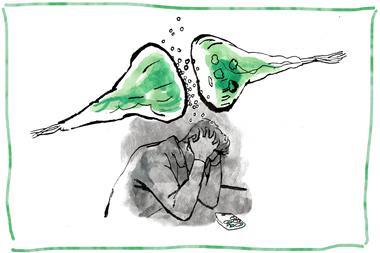Is there a bigger meeting of minds than in research into our own minds? Trying to understand our brains is one of the most interdisciplinary efforts in all science, occupying researchers from diverse disciplines and spanning the scale from individual atoms to whole societies.
Biologists and chemists seek the biomolecular basis of our brains, while medics and psychotherapists study how the brain’s function affects our health. Psychologists and social scientists try to understand the links between our brains, our behaviour and our nature; and our cognitive mechanics have been explored and exploited by computational scientists. Yet despite all this effort (and much more besides) the brain remains a darkened isle – crudely mapped and poorly understood. In our brain chemistry collection, we’re looking at just a few of the areas where chemistry is helping us to understand our brains better.
The chemical context of the brain is now an everyday shorthand for describing our psychology and behaviour
It’s just over 100 years since Otto Loewi dreamed (twice!) of the experiments that would first prove communication between neurons is of a chemical, rather than electrical, nature. We now know those signals are transmitted by molecules diffusing out of neurons into the synapses and the first such neurotransmitter to be identified (by Loewi) was acetylcholine. Since then many more have been discovered and some of them have even become household names.
The chemical context of the brain is now an everyday shorthand for describing our psychology and behaviour. Expectant mothers are reassured by midwives that oxytocin will kickstart their nurturing instinct; evangelising crossfitters will corner you to extemporise about endorphin highs; social media platforms serve you articles on curing your dopamine addiction even as they exploit it; and serotonin is now essentially a synonym for mental health, and depression in particular.
Inevitably, these associations between molecules and mood become unhelpful as they blur into attribution – oversimplifying the enormous complexity that exists between a protein–ligand interaction and a person’s actions. And it gives a false sense of certainty. The notion that we can correct a chemical imbalance to improve mental health, for example, is persistent and popular but as our story shows, treating depression is not so simple as stocking up on serotonin. There is much we still don’t know about how drugs we use to treat depression work and these questions lead to nuanced arguments about how best to treat people suffering from depression. The brain might bring different researchers together, but that doesn’t mean they’ll get along.
Elsewehere in the collection we explore what chemistry can tell us about other big questions such as pain and memory, and we look at how the brain’s complexity continues to confound efforts to treat diseases of the brain such as dementia. We also look at how our knowledge of the brain’s reward pathways is leading to potential new treatments for the debilitating effects of substance abuse and addiction. Finally, before any of that knowledge about the brain’s chemistry can be used to treat patients, the first challenge chemists have to overcome is getting a molecule into the brain in the first place. Our last feature therefore looks at how chemists are trying new ways to get past an old foe of pharmaceuticals: the blood–brain barrier.
The central role of chemistry in our brains creates the seductive possibility that we might be able to step up from molecular interactions to the wild complexity of personality, identity and human behaviour. But like many ideas that are attractive in their simplicity, it’s likely to be more dangerous than helpful. As the work highlighted in this issue shows, at each step we learn that things are a bit more complicated than we first thought. Our brains still hold many more mysteries and surprises we have yet to discover, and so the best thing we can do is to keep an open mind

















No comments yet